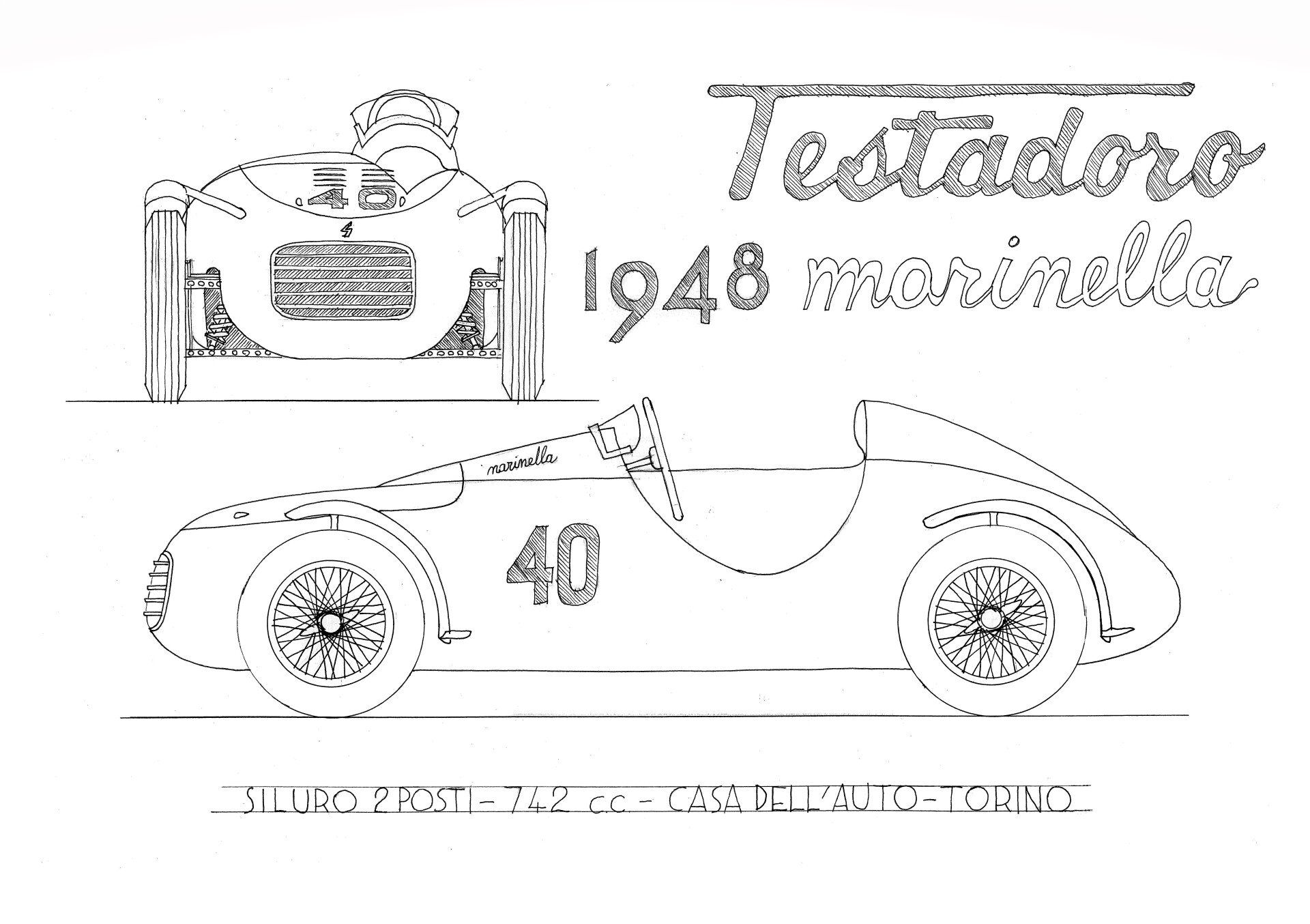Testadoro Marinella - 1948
The first "torpedo" of the Testadoro
History and Context
THE MYSTERY OF THE TWO "MARINELLA" TORPEDO
"Marinella I"
Obviously, at the time of its presentation this car was simply called Marinella, but it is currently defined as "Marinella I" to distinguish it from the famous "Marinella II", which was born again in 1948 and appears in numerous photographs of the time driven by Giusti himself.
This car is equipped with a tubular frame characterized by longitudinal members in round tubes of large diameter, similar to the Gilco type "750", but characterized by effective front suspension with a deformable quadrilateral with overlapping triangles and coil springs, a solution then peculiar to racing cars. . Peculiar to the Marinella, both in this first version and in the subsequent evolution, are the suspension arms equipped with a series of round lightening holes, clearly visible in all the photographs of the time.
"Marinella II"
In numerous photographs of the time Giorgio Giusti appears on a car with the inscription "Marinella II" in italics on the left side.
In the absence of documents of the time that describe the characteristics of this second version, and of visible aesthetic differences compared to the first, the most accredited hypotheses refer this distinction to the presence of substantial changes in the frame part.
Notwithstanding, in fact, that the version of the engine appears to be the same throughout the 1948 season, it is believed that the "Marinella II" differs from the first for the adoption of the famous "isorigid" type frame which will become one of the distinctive signs of the "Daniela" of the following year; in fact there are several documents that attest to the presence of this lattice frame already in the Marinella.
In the constant evolution of racing cars, in fact, it is not uncommon to see the transformation of the cars in the middle of an August season.
The presence of a photograph depicting a Marinella with the rounded air intake characteristic of Daniela would seem to support the hypothesis that one of the two Marinellas from 1948 (and probably the second version with Isorigid chassis) was then transformed into Daniela for the 1948 season. .



